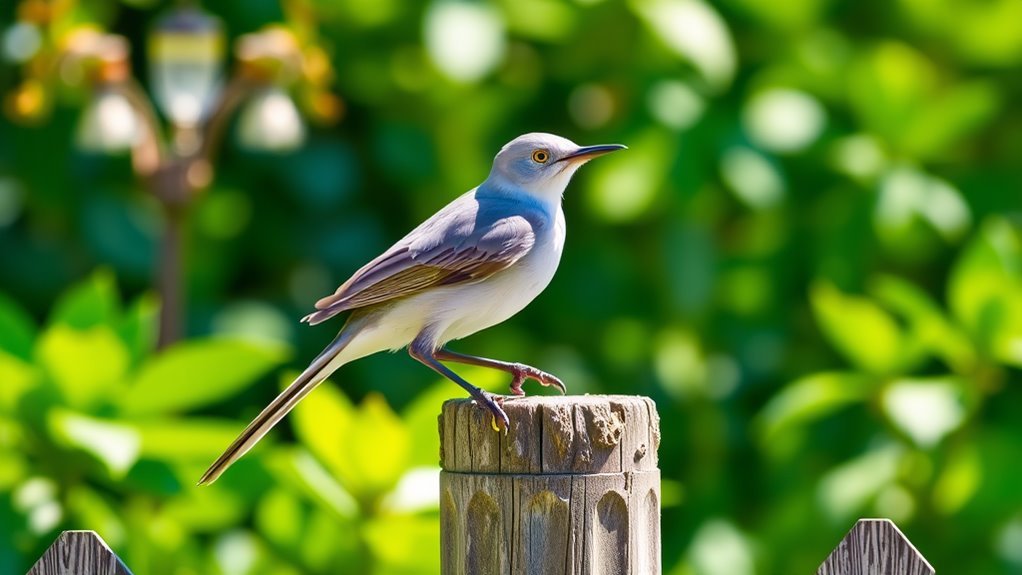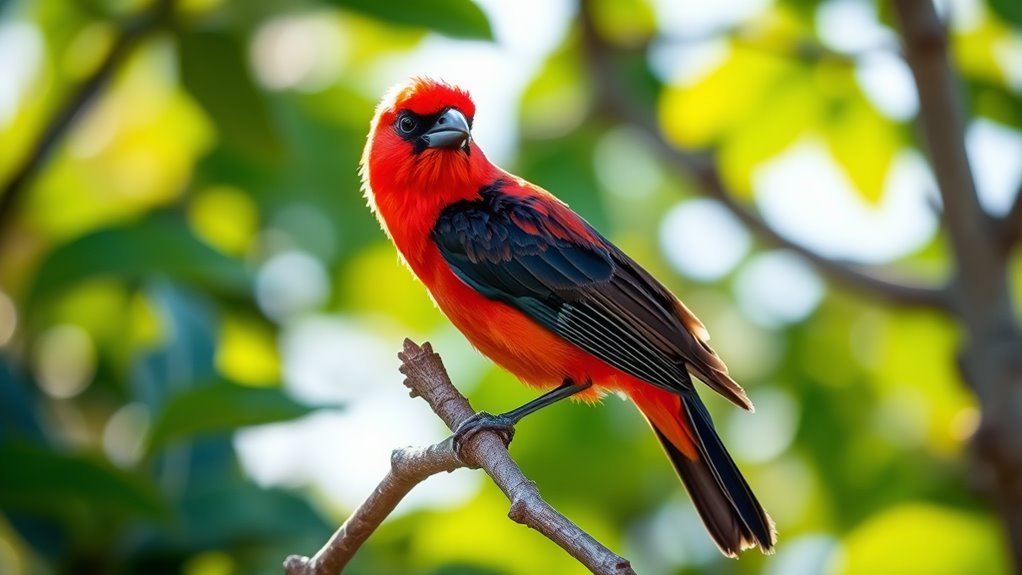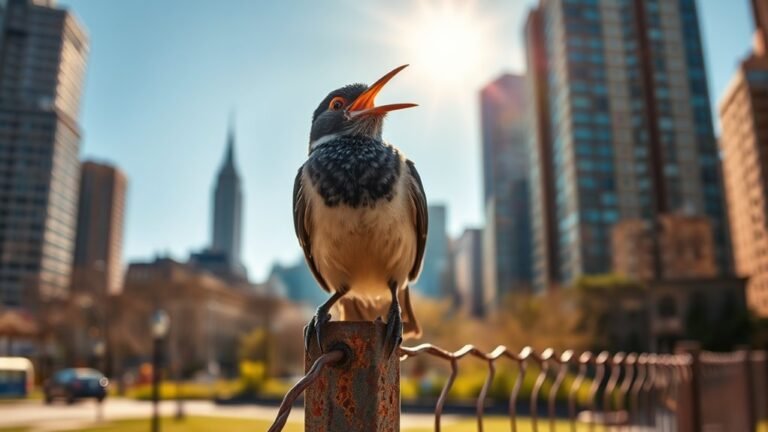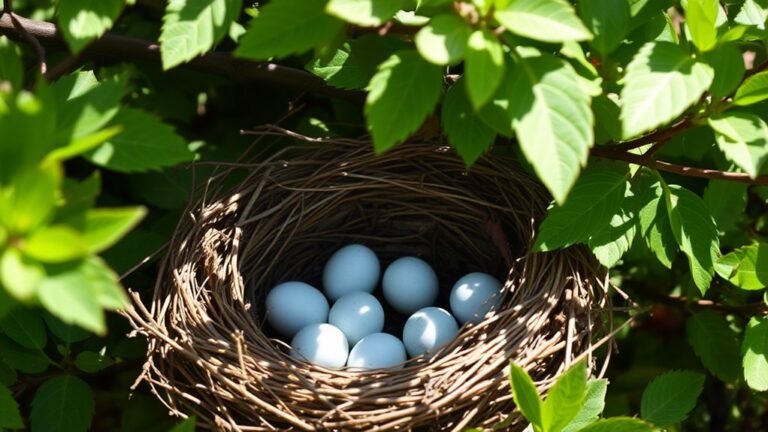15 Birds That Look Like Cardinals: Complete Guide
When you look at birds that look like cardinals, you will see clear features and behaviors that can lead to confusion. The Pyrrhuloxia and the Scarlet Tanager are two examples. Each bird has unique traits that are interesting to learn about. By studying their calls, colors, and where they live, you can discover a diverse range of birds that share similarities with cardinals. This knowledge will improve your bird identification skills and help you enjoy observing these beautiful creatures even more.
Key Takeaways
Northern Mockingbirds have gray feathers and yellow eyes, which can lead to confusion with cardinals. However, they are known for their impressive vocal skills.
Pyrrhuloxias, also called desert cardinals, have a sturdy body and create sweet calls. They usually live in dry areas.
Scarlet Tanagers are bright red but can be identified by their black wings and tail. They prefer to stay in deciduous forests during migration.
Several grosbeaks and tanagers, such as the Summer Tanager and Rose-breasted Grosbeak, look similar to cardinals but have unique markings that set them apart.
Watching these birds can deepen your appreciation for nature and make birdwatching more enjoyable.
Northern Mockingbird

The Northern Mockingbird is often mistaken for a cardinal due to its physical features. It has gray feathers, white wing patches, and bright yellow eyes. While it may share a similar shape with cardinals, its colors are less vivid.
What makes the mockingbird unique is its ability to mimic the songs of over 200 other birds. This skill enriches the birdwatching experience. When you listen to its songs, you'll hear a variety of melodies that repeat with slight changes. This showcases the bird's vocal talent.
Unlike cardinals, the mockingbird creates a range of sounds that capture attention and spark curiosity. Its adaptability in various environments further highlights its distinct presence.
Pyrrhuloxia
The Pyrrhuloxia, also known as the desert cardinal, looks similar to the Northern Cardinal. It has a stout body and a noticeable crest, which adds to its appeal.
Pyrrhuloxias are social birds. They often appear in pairs or small groups, searching for seeds and fruits together. Their sweet, melodic calls fill the desert environment, enhancing your time spent in their presence.
These birds prefer dry areas such as deserts and scrublands and typically build their nests in thick shrubs.
Learning about the Pyrrhuloxia can help you appreciate its role in the ecosystem and enjoy observing these fascinating creatures.
Scarlet Tanager

The Scarlet Tanager is often confused with a cardinal at first glance. However, a closer look shows clear differences. The Scarlet Tanager has bright red feathers, with black wings and a tail. This contrasts with the all-red cardinal.
You can find Scarlet Tanagers in deciduous forests, their preferred habitat. They like high canopies and often sing sweet, melodic calls from above.
During migration, which happens from late March to early May, these birds travel from Central America to North America. This journey shows their ability to adapt.
Knowing these facts about the Scarlet Tanager helps you appreciate North America's diverse bird life.
Summer Tanager
The Summer Tanager is a bird found in North America. Its bright colors may make you think it's a cardinal, but it has unique traits.
You can find the Summer Tanager in open woodlands, parks, and near water, especially where there are many deciduous trees.
This bird mainly eats insects like beetles and caterpillars. It also enjoys ripe fruits, particularly mulberries and blackberries. This varied diet helps it thrive in different environments.
Western Tanager

The Western Tanager (Piranga ludoviciana) is often confused with a cardinal because of its bright colors. However, it has unique traits that differentiate it.
This bird prefers mixed forests, especially in mountainous areas. You can find them in open woodlands and shrubby places, where they like to perch high to spot food.
Western Tanagers mainly eat insects and berries. They often search in the trees for caterpillars and beetles.
Their diet changes with the seasons, showing their ability to adapt. Understanding these features helps you see how the Western Tanager is different from cardinals, while still appreciating its vibrant presence.
Rose-breasted Grosbeak
The Rose-breasted Grosbeak (Pheucticus ludovicianus) resembles a cardinal due to its bright colors. The male has a distinct red patch on its chest.
Here are some important details about this bird:
- Habitat: It lives in deciduous forests and areas with shrubs.
- Diet: It mainly eats seeds and fruits. During breeding season, it also eats insects.
- Breeding: The breeding season is from May to July. They build nests in dense foliage.
- Migration: They winter in Central America and return north in spring.
The Rose-breasted Grosbeak is a beautiful bird that adds color to its habitat. Observing its feeding habits and nesting behavior can be enjoyable for birdwatchers.
Black-headed Grosbeak
The Black-headed Grosbeak (Pheucticus melanocephalus) is a colorful bird known for its striking appearance. It has bright yellow feathers and a prominent black head. Birdwatchers enjoy spotting this grosbeak due to its vibrant colors.
These birds often feed in pairs or small groups, showing their social nature. Their diet includes seeds, fruits, and insects, which highlights their ability to thrive in various environments.
You can find them in scrub, woodlands, or gardens. Their cheerful songs and vivid colors bring joy to the landscape.
Watching Black-headed Grosbeaks can help you appreciate the diversity of birds in your area. They're a delightful addition to any outdoor space.
Evening Grosbeak
The Evening Grosbeak (Coccothraustes vespertinus) is a striking bird known for its vibrant colors. Here are some key features:
- Habitat: This bird prefers coniferous forests and urban areas.
- Diet: It mainly eats seeds, especially those from maple and sunflower plants.
- Social Behavior: Evening Grosbeaks often form small flocks, creating a sense of community.
- Calls: Their unique vocalizations add charm to the evening atmosphere.
Learning about the Evening Grosbeak's habitat and diet can enhance your birdwatching experience.
Recognizing these characteristics helps you connect with nature and enjoy the company of fellow bird lovers.
House Finch
House Finches (Haemorhous mexicanus) are adaptable birds that thrive in various environments, including urban and rural areas. You can often spot them in parks, gardens, and neighborhoods. They make good use of spaces created by humans.
House Finches are social birds, forming flocks, especially outside the breeding season. This social behavior helps them find food, which mainly consists of seeds and fruits.
You may notice their unique feeding habits as they forage from bird feeders and natural sources. Their preferred habitats include open areas with plenty of vegetation, which provides easy access to food.
Learning about their behavior and habitats can enhance your birdwatching experience and help you connect with local wildlife.
California Towhee
The California Towhee (Melozone crissalis) may look like a cardinal because of its reddish-brown feathers, but it has unique features that help you identify it.
Here are some key points:
- Size: California Towhees are bigger than cardinals.
- Tail: They've a long, pointed tail that's often held upright.
- Call: Their call sounds like "chewy," which is different from a cardinal's song.
- Habitat: They live in shrubland or coastal sage scrub areas.
California Towhees search for seeds and insects on the ground.
They prefer open spaces and thickets. Knowing these details will help you spot and enjoy these interesting birds in their natural surroundings.
Orchard Oriole
The Orchard Oriole (Icterus spurius) is a colorful bird that stands out in open woodlands, farmlands, and orchards. It thrives in areas with plenty of food and nesting options.
These birds actively search for insects and fruits, displaying quick movements as they fly between branches. Their cheerful songs add to the lively atmosphere around them.
During breeding season, male Orchard Orioles show off their bright plumage to attract females. Learning about their habitat and behavior helps you appreciate these interesting birds more.
Red-winged Blackbird
The Red-winged Blackbird (Agelaius phoeniceus) is commonly found in wetlands, marshes, and fields with tall grasses.
Here are some key features of this bird:
- Habitat Preferences: They live near water and thrive in dense plants.
- Vocalizations: They make a unique "conk-la-ree" sound, which is different from the songs of the orchard oriole.
- Social Behavior: These birds often gather in groups, especially during migration.
- Coloration: Male Red-winged Blackbirds have black feathers with bright red and yellow shoulder patches.
Recognizing these traits helps you appreciate the Red-winged Blackbird and its role in the ecosystem.
Eastern Towhee
When you see the Eastern Towhee (Pipilo erythrophthalmus) in its habitat, you might notice its similarity to a cardinal. This bird prefers shrubby areas, forest edges, and overgrown fields, adding color to its environment.
Eastern Towhees often search for food on the ground, scratching through leaves to find seeds and insects. They produce a bold song that sounds like "drink-your-tea," which marks their presence and connects them with other birds.
Their migration between breeding and wintering areas is also interesting. Watching these birds can help you appreciate the diversity in your surroundings and encourage you to learn about their behaviors in your local ecosystem.
Common Redpoll
The Common Redpoll (Acanthis flammea) is a small, lively bird that often shares habitats with the Eastern Towhee. You can find these birds in shrubby areas, especially during winter.
Here are some key facts about their behavior and habitat:
- Common Redpolls live in open woodlands and arctic tundra.
- They're social and often form flocks.
- Their main food source is seeds, particularly from birch and alder trees.
- Listen for their cheerful, twittering calls.
Watch their energetic movements and playful antics, which add to their charm.
Enjoying their presence can enhance your experience in nature.
Crimson-collared Grosbeak
The Crimson-collared Grosbeak (Zxanthochimus orthopeplus) looks similar to a cardinal with its bright red feathers and sturdy body. However, it has a unique black head and a yellow patch on its back. This colorful appearance attracts birdwatchers.
These birds live in tropical and subtropical forests in Central America, where they find plenty of food.
You can often see them in tree canopies, eating seeds and fruits. Their friendly nature allows them to gather in flocks, creating a joyful sight for bird lovers.
Learning about the Crimson-collared Grosbeak can enhance your appreciation for different bird species.
Frequently Asked Questions
What Are the Key Differences Between a Cardinal and a Mockingbird?
The cardinal has bright red feathers and makes unique sounds. In contrast, mockingbirds imitate different noises and show a wider range of behaviors. These differences help you recognize and appreciate both birds better.
How Can I Attract Cardinals to My Backyard?
To attract cardinals to your backyard, place bird feeders filled with sunflower seeds. Also, add native plants that provide natural shelter and food. This will create a friendly environment for these colorful birds to visit and thrive in your space. Enjoy watching their vibrant colors and lively behavior as they come to your feeders.
Are Cardinals Solitary or Social Birds?
Cardinals have both solitary and social behaviors. During mating season, you can see cardinal pairs together. Outside of this time, they often stay alone or in small groups. This shows their varied social habits in nature.
What Do Cardinals Eat in the Wild?
Cardinals mainly eat seeds. They prefer sunflower, safflower, and millet seeds. You can often see them foraging in pairs. They use their strong beaks to crack open tough seed shells. Watching them feed is an enjoyable experience.
What Is the Lifespan of a Cardinal in the Wild?
In the wild, cardinals usually live for about three years. Their lifespan depends on several factors, including predators and nesting habits. Successful reproduction and protection from threats can help them live longer than this average.

Ava is a bird enthusiast and nature lover who has spent countless hours observing and learning about the fascinating world of birds. With a passion for sharing her knowledge and inspiring others to appreciate the beauty of birds, Ava writes about her experiences and insights on avianadmirer.com.







